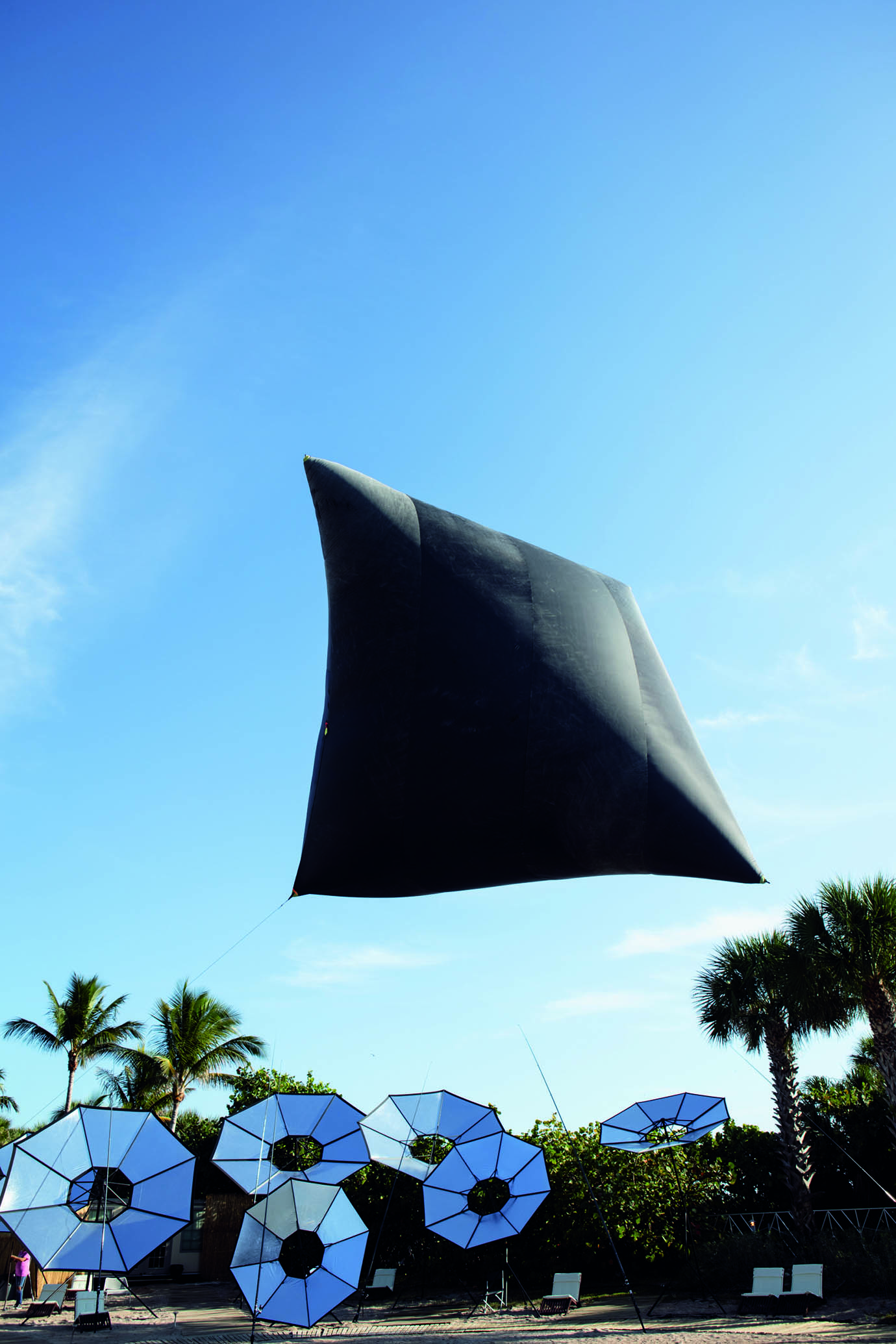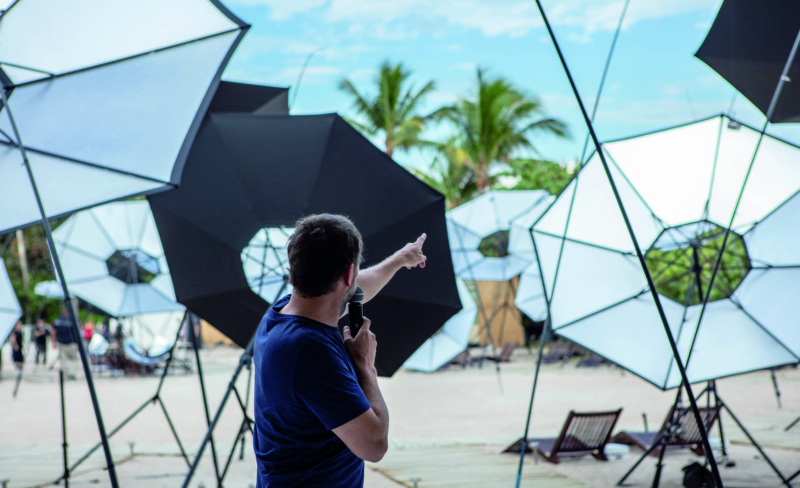
Is there such thing as good or bad weather, or only ways of adjusting our activities accordingly? When is the most appropriate, less damaging time to fly, or to cook? How can we reconfigure our relationship to the sun, and make our life on earth more sustainable?
These are some of the questions asked by Argentinian artist Tomás Saraceno during Miami Art Week, where he launched his new project Albedo, in collaboration with Swiss Haute Horlogerie Manufacturer Audemars Piguet. The sustainable, site-specific installation consisted of 40 reflective, out-turned umbrellas, installed as a temporal pavilion. Together, the umbrellas created a hemispherical sundial on the Miami oceanfront to power daily solar flight performances by the floating sculpture, Aerocene Explorer. It is part of an ongoing, open-source community effort for artistic and scientific exploration of environmental issues.
The project helps to “imagine together a future free of borders and free of fossil fuels,” said the Berlin-based artist, whose solo project ON AIR is currently on view at the Palais de Tokyo in Paris. “A new ethical commitment to the atmosphere, a new epoch that we call Aerocene,” he continued, his airborne vessel flying in the background.

But don’t let the artsy jargon put you off—it’s not rocket science. In fact, it’s pretty simple: adopting alternative sources of energy, to live more sustainably. So, throughout the week, art fairs-goers could interact with the sculpture, enjoy solar-powered-slow-cooked local, sustainable cuisine, and dance to tunes courtesy of…the sun. Voila.
Coincidentally, the project took place as delegates from nearly 200 countries gathered in Poland for the 24th annual meeting on climate change. Yes, the same meeting where the US promoted coal. As the Paris agreement is due to enter into force by 2020, in an attempt to limit global warming catastrophe, these conversations are critical. Like Olafur Eliasson or Agnes Denes, Saraceno is among a leading troop of environmentally-minded "artivists" who are bringing those concerns into the realm of art and the public space.
And the art world is certainly not exempt from it. In fact, there is a certain irony in hosting those conversations at Miami Art Week—possibly the art world’s most wasteful annual gathering, with carbon emissions going through the roof to fly thousands of art professionals and ship tons of non-recyclable packaging. In that context, one might ask if Saraceno’s project truly proposes an alternative model to powering art fairs, or merely contributes to their culture of excess. As Pulitzer Prize-winning critic Jerry Saltz suggested, we’re all creating this system that we can’t to get out of. Yet, Saltz’s refusal to “cross water for art fairs” might be the most impactful gesture—at least for now.



